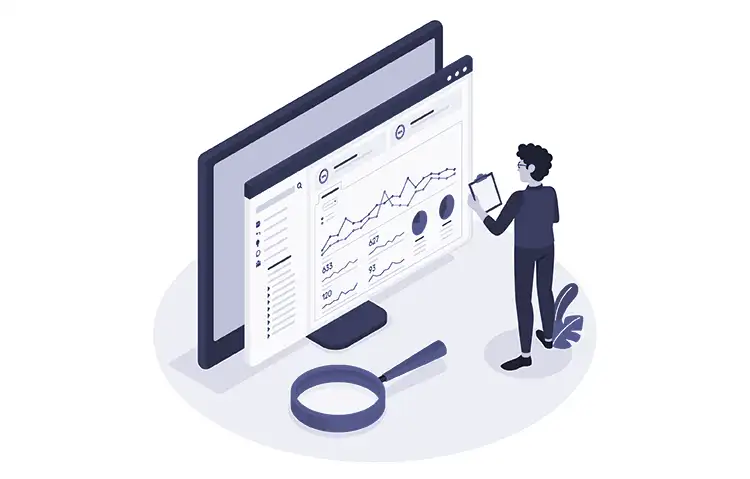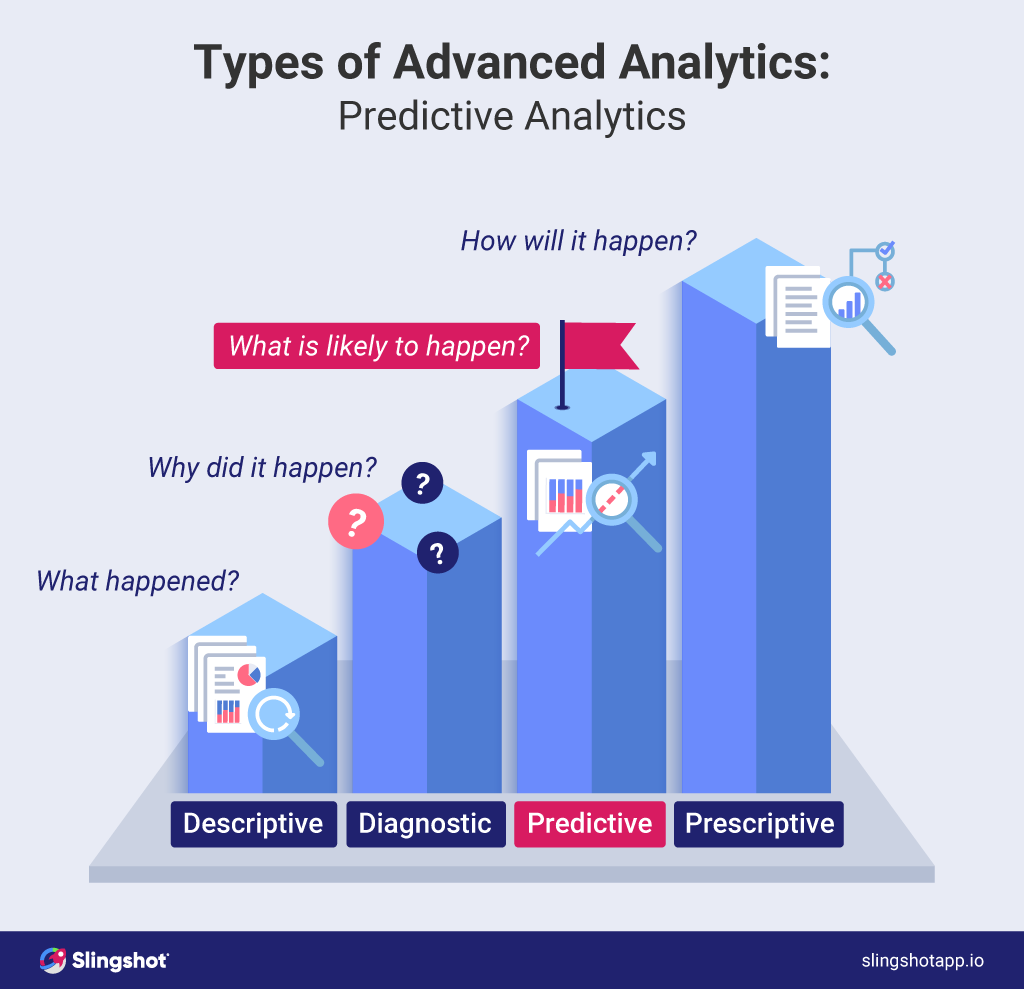
Picture this: you’re the captain of a ship navigating the vast ocean of business strategies. You have a destination in mind, but you’re constantly battling unpredictable waves and ever-changing weather conditions. Wouldn’t it be amazing if you had a crystal ball that could predict the future and help you chart the most optimal course? Well, guess what? With the power of predictive analytics, you can leverage data to make informed decisions and optimize your business strategies like never before.
Predictive analytics is like having a superpower that enables you to see into the future of your business. By analyzing historical data and identifying patterns, trends, and correlations, you can uncover valuable insights that guide your decision-making process. It’s like having a trusted advisor whispering in your ear, providing you with invaluable guidance and helping you navigate the choppy waters of the business world. From predicting customer behavior to optimizing supply chain management, leveraging predictive analytics allows you to stay one step ahead of the competition and make informed decisions with confidence.
So, hop aboard the predictive analytics train and unlock the secrets to optimizing your business strategies. In this article, we’ll dive deep into the world of predictive analytics, exploring its applications, benefits, and best practices. Get ready to harness the power of data and revolutionize the way you approach your business strategies. Together, we’ll sail towards success, armed with the insights and knowledge to navigate any storm that comes our way.

Leveraging Predictive Analytics to Optimize Business Strategies
Predictive analytics is a powerful tool that businesses can use to gain valuable insights and make informed decisions. By analyzing historical data and patterns, predictive analytics can help businesses forecast future outcomes and trends, enabling them to optimize their strategies for success. In this article, we will explore the various ways in which businesses can leverage predictive analytics to optimize their business strategies and stay ahead of the competition.
The Power of Predictive Analytics
Predictive analytics involves using statistical models and algorithms to analyze historical data and make predictions about future events or behaviors. This can be incredibly valuable for businesses, as it allows them to anticipate customer needs, identify market trends, and optimize their operations. By leveraging predictive analytics, businesses can gain a competitive edge and make data-driven decisions that lead to improved outcomes.
Predictive analytics can be applied to various aspects of a business, such as sales forecasting, inventory management, customer segmentation, and marketing campaigns. By analyzing historical sales data, for example, businesses can accurately predict future sales volumes and adjust their production and inventory levels accordingly. This helps in minimizing waste and ensuring optimal resource allocation.
The Benefits of Leveraging Predictive Analytics
There are numerous benefits to leveraging predictive analytics in business strategies. Firstly, it allows businesses to make more accurate forecasts and predictions, reducing uncertainty and improving decision-making. By having a clearer understanding of future market trends and customer behavior, businesses can tailor their strategies to meet changing demands and stay ahead of the competition.
Secondly, predictive analytics enables businesses to optimize their operations and resource allocation. By analyzing historical data on customer preferences, businesses can segment their customer base and target specific groups with personalized marketing campaigns. This leads to increased customer engagement, loyalty, and ultimately, higher sales conversions.
Furthermore, predictive analytics can help businesses identify potential risks and opportunities. By analyzing historical data and market trends, businesses can proactively identify potential risks and take measures to mitigate them. This allows businesses to stay agile and responsive in a rapidly changing business landscape.
Implementing Predictive Analytics
Implementing predictive analytics in business strategies requires careful planning and execution. Here are some key steps to consider:
1. Define clear objectives: Clearly define the goals and objectives you want to achieve through predictive analytics. This will help guide your analysis and ensure that you focus on the most relevant data and insights.
2. Gather and clean data: Collect relevant data from various sources, ensuring that it is accurate and up-to-date. Clean the data by removing any duplicates or errors to ensure the accuracy of your analysis.
3. Analyze data: Use appropriate statistical models and algorithms to analyze the data and extract meaningful insights. This may involve techniques such as regression analysis, decision trees, or neural networks.
4. Interpret results: Once you have analyzed the data, interpret the results to gain actionable insights. Identify patterns, trends, and correlations that can inform your business strategies.
5. Implement and monitor: Implement the insights gained from predictive analytics into your business strategies and monitor their impact. Continuously evaluate and refine your strategies based on the results to ensure ongoing optimization.

In conclusion, leveraging predictive analytics can be a game-changer for businesses looking to optimize their strategies. By harnessing the power of data and analytics, businesses can make more informed decisions, anticipate market trends, and stay competitive in today’s dynamic business environment. With careful planning and implementation, businesses can unlock the full potential of predictive analytics and drive future success.
Key Takeaways: Leveraging Predictive Analytics to Optimize Business Strategies
- Predictive analytics is a powerful tool that helps businesses make informed decisions based on data.
- By using predictive analytics, businesses can anticipate future trends and customer behavior.
- Optimizing business strategies with predictive analytics can lead to increased efficiency and profitability.
- Implementing predictive analytics requires collecting and analyzing large amounts of data.
- Using predictive analytics can give businesses a competitive advantage in the market.
Frequently Asked Questions
Question 1: How can predictive analytics benefit businesses in optimizing their strategies?
Predictive analytics is a powerful tool that can provide businesses with valuable insights into future trends and patterns. By analyzing historical data, businesses can identify patterns and make accurate predictions about customer behavior, market trends, and other factors that can impact their strategies. With this knowledge, businesses can make informed decisions and tailor their strategies to maximize success.
Furthermore, predictive analytics can help businesses identify potential risks and opportunities. By identifying potential risks, businesses can take proactive measures to mitigate them and minimize their impact. On the other hand, by identifying opportunities, businesses can capitalize on them and gain a competitive advantage in the market. Overall, leveraging predictive analytics enables businesses to optimize their strategies and stay ahead of the competition.
Question 2: What are the key steps involved in leveraging predictive analytics for optimizing business strategies?
The process of leveraging predictive analytics to optimize business strategies involves several key steps. Firstly, businesses need to identify the specific goals they want to achieve through predictive analytics. This could include improving customer retention, increasing sales, or optimizing resource allocation.
Once the goals are defined, businesses need to gather and analyze relevant data. This could include customer data, market data, and historical performance data. The data needs to be cleaned and prepared for analysis to ensure accuracy and reliability.
Next, businesses need to select appropriate predictive analytics techniques and models to analyze the data. This could include regression analysis, machine learning algorithms, or time series forecasting. The selected models need to be trained and validated using the available data.
Finally, businesses need to interpret the results of the predictive analytics models and use them to make informed decisions. These decisions should be integrated into the overall business strategy and regularly monitored and adjusted based on new data and insights.
Question 3: What are some potential challenges businesses may face when leveraging predictive analytics?
While predictive analytics can offer significant benefits, there are also potential challenges that businesses may face. One common challenge is the availability and quality of data. Predictive analytics relies on accurate and relevant data, and if businesses do not have access to such data, the effectiveness of the analysis may be compromised.
Another challenge is the complexity of predictive analytics models. Building and implementing these models require specialized skills and expertise. Businesses may need to invest in training or hire data scientists to effectively leverage predictive analytics.

In addition, predictive analytics is not a one-time solution but an ongoing process. Businesses need to continuously update and refine their models based on new data and changing market conditions. This requires dedicated resources and commitment from the organization.
Question 4: How can businesses ensure the accuracy of predictive analytics in optimizing their strategies?
Ensuring the accuracy of predictive analytics requires several measures. Firstly, businesses need to ensure the quality and integrity of their data. This includes regularly monitoring and cleaning the data to eliminate any errors or inconsistencies.
Secondly, businesses should validate and test their predictive analytics models using historical data. This helps to assess the accuracy and reliability of the models before applying them to real-time decision-making.
Furthermore, businesses should regularly evaluate the performance of their predictive analytics models against actual outcomes. This helps to identify any discrepancies and refine the models accordingly.
Lastly, businesses should consider using multiple predictive analytics models or techniques to cross-validate the results. This can help to ensure more accurate predictions and reduce the risk of relying on a single model.
Question 5: Can predictive analytics be applied to all types of businesses?
Yes, predictive analytics can be applied to businesses across various industries and sectors. The principles of predictive analytics remain the same, regardless of the type of business. The key is to have access to relevant data and apply the appropriate predictive analytics techniques.
However, the specific application and implementation of predictive analytics may vary depending on the nature of the business. For example, a retail business may use predictive analytics to optimize inventory management and demand forecasting, while a financial institution may use it for fraud detection and risk assessment.
Ultimately, the potential benefits of leveraging predictive analytics in optimizing business strategies are applicable to businesses of all types and sizes.

Final Summary: Leveraging the Power of Predictive Analytics to Optimize Your Business Strategies
As we wrap up our discussion on leveraging predictive analytics to optimize business strategies, it’s clear that this cutting-edge technology has the potential to revolutionize the way we approach decision-making and planning. By harnessing the power of data and advanced algorithms, businesses can gain valuable insights and make informed decisions that drive success.
Predictive analytics offers a wide range of benefits, from improving operational efficiency to enhancing customer satisfaction. By analyzing past data patterns and trends, businesses can accurately forecast future outcomes, enabling them to make proactive adjustments and stay ahead of the competition. Moreover, the ability to identify and understand customer behavior allows businesses to tailor their strategies and offerings to meet the specific needs and preferences of their target audience.
In conclusion, predictive analytics is not just a buzzword; it’s a game-changer. By incorporating this powerful tool into your business strategy, you can unlock a world of opportunities and take your organization to new heights. Embrace the data-driven revolution and watch as your business thrives in today’s fast-paced and ever-evolving marketplace. Remember, the future belongs to those who can predict it. So, why not leverage the power of predictive analytics and position your business for success?